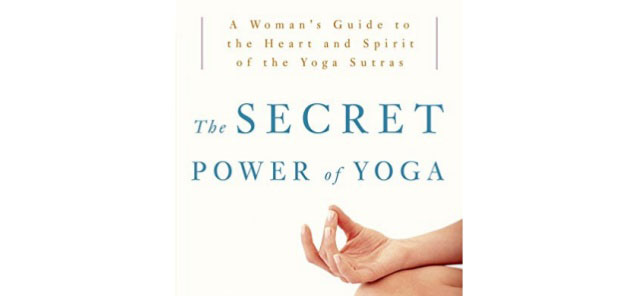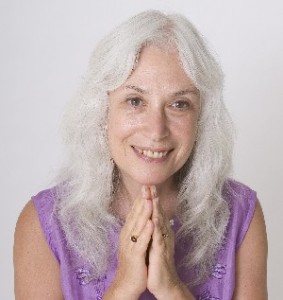 Nischala Devi’s teachings reflect a heart-centered perspective on spirituality and scripture. Her message that we are born divine is never more evident than in her book, The Secret Power of Yoga: A Woman’s Guide to the Heart and Spirit of the Yoga Sutras. In this interview, Nischala offers a view into the process she went through in reinterpreting the Yoga Sutras for women.
Nischala Devi’s teachings reflect a heart-centered perspective on spirituality and scripture. Her message that we are born divine is never more evident than in her book, The Secret Power of Yoga: A Woman’s Guide to the Heart and Spirit of the Yoga Sutras. In this interview, Nischala offers a view into the process she went through in reinterpreting the Yoga Sutras for women.
Integral Yoga Magazine (IYM): Why did you feel the need to write a woman’s guide?
Nischala Devi (ND): As a woman who has great love for Yoga and spirituality, and the Yoga Sutras in particular, I kept looking at the Sutras saying, “We are not represented here.” Where was our voice for the last several thousands of years? I felt there was a need for a commentary on the Sutras that used woman-centered parables and life-affirming language. For example, the classical translation and commentary about the practice of saucha generally expresses disgust for the human body. I found that I just couldn’t teach that.
IYM: So, how did address saucha in your book?
ND: I framed that sutra from the context of looking at purity of the heart instead of focusing on the body. This is what we see in Mother Theresa. She didn’t see the man lying in the street in his own fecal matter; she didn’t see the man with oozing leprosy sores. She looked at the person and saw Jesus there. It was really very important to me to get that across to people. So I translate that sutra as, “Through simplicity and continual refinement (saucha), the body, thoughts and emotions become clear reflections of the Self within. And I always address the emotions. My feeling is that when experience saucha, you experience the divine in everyone, not the disgust of their bodies.
IYM: What kind of challenge was it to do this reframing?
ND: It was a tremendous process. During this waking up, I realized there was another way of teaching these concepts. I would tell my students they are a divine being and nothing can change that. The women would suddenly get tears in their eyes. I would watch the light go on in their hearts and they would start talking differently about themselves. So, I started playing with the words in the descriptions of the yamas and niyamas. I realized that everything was framed in the negative. “Non” this and “non-that.” Non-violence, non-stealing, and so on. And I thought, “Wait a minute. That is not expressed as it is intended: as life-affirming, divine being-affirming.
IYM: Since the Yoga Sutras is such a classic, were you concerned about trying a different approach?
ND: Absolutely! I didn’t want to re-write the Sutras! We have a wonderful commentary by Sri Gurudev (Swami Satchidananda), but, this all started to evolve. I began to dream about what each sutra meant. I began to feel Sri Gurudev and the Goddess Saraswati directing this process. During the time of writing, I would have inspiring pictures of divine beings around me. I had the Saraswati mantra playing while I would be at the computer. I also drew inspiration from seven or eight different translations of the Yoga Sutras on my desk. I would sometimes stare at a word like “ahimsa” for sometimes two days asking it to talk to me, to tell me what it meant. And then it would reveal itself to me.
IYM: What came to you about ahimsa?
ND: That it is not only non-harming, but that it is an embracing reverence and love for all. I’m not a violent person by nature. So, non-violence isn’t something that would seem challenging to me or something that would speak to me. But, I can relate more to the practice of striving to remember that my true nature is to love everyone. So, this whole reframing became quite a process. When I started, I saw an amazing rhythm to the whole process and I couldn’t stop.
IYM: What do you mean by “rhythm.”
ND: There is an ancient system I worked with in undertaking this renewed study of the Sutras. This system teaches the Sutras in three stages. In the ancient times, you would go to a teacher who would give a sutra and the student would retreat to a quiet place to work with it. The process would be: First there is sravana (hearing scripture)—you listen to the sutra. You repeat the sutra aloud, so you are hearing it. This means you are reflecting on it from an intuitive state. At this stage, you don’t have a commentary. You are just repeating the sutra and feeling it viscerally. Then you go to the second stage which is manana or reflection. You ask yourself, “What could it mean?” You go back to the teacher and say, “This is what it felt like to me.” At that point the teacher gives you some commentary on the sutra. The third part is nididhyasana, and this means you experience the sutra. Just learning something or knowing the philosophy and wisdom behind is great, but having a real experience of what the sutra means is really most important. That was my practice with writing all of the sutras.
IYM: It sounds like a wonderful process. Can you give us an example of how others could work with the nididhyasana part of this process?
ND: Yes. The first sutra is: “Atha Yoganusasanam.” This means, “With humility (an open heart and mind) we embrace the sacred study of Yoga. We can begin to reflect on what it is like to experience the sacred, the divine in everything. At the end of the day, review your whole day and see what you did. I made the bed, I checked my e-mail, I walked the dog, I went to work and so on. Now, go back and choose on one activity from your day. Let’s take for example, making the bed. How can we transform that into a spiritual practice? Can you savor the smooth feeling of the linens? Have fun plumping the pillows and then put in a happy vibration so when you go to bed at night that vibration is there. Next: answering e-mail, washing dishes, paying bills—see how you can bring the sense of joy and divinity into everything you do. Notice how each experience of your life can be inwardly transformed and bring you to a place of presence and joy, recognizing that the Divine is omnipresent. This is the heart of Sri Gurudev’s teachings and his own commentary on the Sutras: Make everything you do spiritual.
The idea of nididhyasana is that we don’t leave the Yoga Sutras and go on with our day. But, rather we bring the Sutras into our lives; we learn to work with them. I’ll give another example. I translated the second sutra (“Yogas citta vritti nirodhah”) as, “Yoga is the uniting of consciousness in the heart.” And, I give an exercise to help cultivate the experience of the divine spirit within. In a softly lit room, sit as close as possible to a mirror and relax. Take moment to look at your face. Bring awareness to your eyes. Keep the eyes soft as you gaze deeply into them. Then begin to repeat aloud or inwardly: “I am a divine being.” Do this for one minute and then build up to five minutes or more. Then close your eyes and continue to repeat this to yourself and reaffirm it throughout your day.
IYM: What is your hope for how your book might contribute to our Yoga knowledge?
ND: What has happened is that Yoga has become asana. People often don’t know that there is a secret power of Yoga—not a physical power, but the wisdom of Yoga that is so powerful. It’s time to let the secret out. We who studied with Yoga masters like Sri Gurudev know this, but others don’t have the experience. One of the things we as women have and are holding secret is our intuitive power. Because our spiritual experiences have really not been acknowledged by the ancient scriptures or teachers, we felt they weren’t there. This is the time to bring our power back to the surface and realize the depth of it. Women have stood in the background of spirituality for too long and it is time to take a leadership role.
The heart of the Yoga Sutras reminds us of who we really are. Even though we take on a human form continue to embrace our divinity. Living in the world, we can bring that divinity into our daily lives and actions. It’s not for just a few, it’s for everyone. There is no need to blame ourselves or shame ourselves if we are not living up to our divine potential. Instead, when we bathe ourselves in compassion, loving ourselves and each other, then we can reclaim our birthright—that divinity within each and every one of us.
 About Nischala Joy Devi
About Nischala Joy Devi
Nischala Joy Devi studied with Sri Swami Satchidanandaji for over 25 years. She developed the Yoga of the Heart® certification course and she is the author of several CDs, The Healing Path of Yoga and The Secret Power of Yoga. For more information, please visit: abundantwellbeing.com and for information on her annual programs at Yogaville, please visit: yogaville.org.

